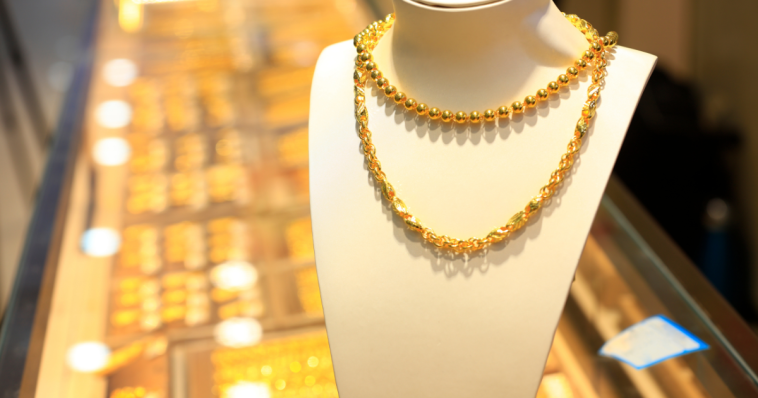Jewelry is a valuable investment, especially in uncertain times. High-quality pieces with rare gemstones retain their value and offer good resale potential. Unlike gold or silver bars, jewelry is portable, can be enjoyed while owned, and easily passed down to future generations. To ensure a worthwhile investment, focus on quality and reputable sellers. Besides financial value, jewelry often holds sentimental worth and can become a coveted collector’s item. So, is jewelry a smart investment? Absolutely! Check out our Jewelry Investment Guide for key factors and tips to make the best choice before buying.
Below are factors that are essential for making a sound investment in jewelry. By considering these aspects, you can ensure that your jewelry not only adds beauty to your life but also serves as a valuable asset in your portfolio.
1. Buy Only from Specialized Stores
Buying from specialized stores with a solid reputation is essential when investing in jewelry. Research the seller’s credentials, whether a jeweler, goldsmith, or designer, to ensure they are trustworthy and knowledgeable. A thorough consultation should precede any purchase, where you can ask detailed questions about the jewelry’s origin and how its value is determined.
2. Emotional Connection to Jewelry
Jewelry is not just an investment; it’s an expression of personal taste and emotion. Purchase pieces that you genuinely like and would enjoy wearing or gifting. Like art, the beauty of a piece lies in its appeal to you. While its value is essential, the joy and connection it brings should also be a critical factor in your decision.
3. High-Quality Jewelry Retains Value
Investing in high-quality jewelry is a wise financial decision. Pieces made with genuine materials like gold, platinum, and high-content precious metals tend to hold their value over time. Classic designs such as rings, simple chains, and elegant earrings, especially those featuring diamonds or luxurious gemstones, will likely remain valuable and sought after.
4. Prioritize Gold, Platinum, and Precious Stones
The value of jewelry increases with the quality and rarity of the materials used. Gold (in various shades), platinum, and precious stones like diamonds, sapphires, rubies, and emeralds are excellent choices. These materials not only maintain their value but also appreciate over time. Investing in high-carat, classic-colored stones can further enhance the jewelry’s worth.
5. Gemstones Add Significant Value
Gemstones like sapphires, rubies, and emeralds are rare and valuable, making them excellent additions to investment jewelry. High-quality gemstones, especially those that are rare or unique, like the Padparadscha sapphire or Paraiba tourmaline, can significantly increase the value of a piece. The stone’s exceptional quality and scarcity are critical factors in determining the jewelry’s investment potential.
6. Consider Famous Brands, Custom, or Antique Jewelry
When choosing investment jewelry, consider pieces from famous brands, custom-made items, or antique jewelry. Well-known brands like Cartier or Bulgari often carry a collector’s value that can increase over time. Alternatively, custom pieces from a trusted goldsmith or designer can offer unique value. Antique jewelry, valued for its history and craftsmanship, is another promising investment avenue.
7. Be Aware of Precious Metal Price Fluctuations
The value of jewelry is closely tied to the market prices of precious metals. Gold and platinum prices fluctuate based on supply and demand, which can affect the resale value of your jewelry. However, if the jewelry features significant gemstones, these fluctuations may have less impact, as fine gemstones typically appreciate due to their rarity.
8. Request Certificates for Added Security
Always ask for detailed documentation when purchasing high-quality jewelry. An invoice should outline the precious metal’s fineness, the gemstone’s carat weight, and other vital details. For precious pieces, request a certificate from an independent gemological laboratory. This documentation not only provides security but also aids in future resale.
9. Get a Second Opinion and Compare
Before finalizing a jewelry investment, seek a second opinion and compare options. This is particularly important for custom-made pieces or those with unique gemstones. Comparing prices and quality at multiple jewelers or goldsmiths can help you make a more informed decision and ensure you get the best value for your money.
10. Don’t Hesitate to Ask Questions
Asking questions is crucial when buying jewelry as an investment. Inquire about the jewelry’s origins, the quality of the diamonds and gemstones, and whether the stones have been treated. Understanding these details helps you assess the actual value of the piece. Additionally, feel free to ask for a discount on finished pieces, though it may be less appropriate for custom orders.
Precious Jewelry to Invest
- Gold as an Investment: Gold is a timeless investment that maintains its value over time despite short-term fluctuations. Investing in gold jewelry, particularly pieces with a high gold content (14k, 18k, or 24k), ensures long-term value. The hallmark or gold stamp on jewelry indicates its gold content, with higher karat numbers signifying more excellent value. Gold can also be alloyed with other metals, enhancing its durability and suitability for everyday wear, making it a solid choice for investment and personal use.
- Silver as an Investment: Silver, just like gold, has earned its reputation as a trusted investment for generations. While it is generally less valuable than gold, silver jewelry, especially sterling silver (92.5% silver), can be a good starting point for investors with limited capital. Silver is often alloyed with other metals to improve its durability, making it ideal for various types of jewelry. Though less stable in value than gold, silver’s affordability and historical significance make it a worthwhile consideration for investment.
- Platinum as an Investment: Platinum is a precious metal that has become increasingly popular in jewelry and the jewelry industry. Its rarity and durability make platinum jewelry a valuable and crisis-proof investment. While its value is influenced by industrial demand, platinum’s long-term stability and ability to withstand wear make it a solid addition to a diversified investment portfolio. Jewelry made from platinum is highly durable, ensuring it retains its value for generations.
- Luxury Watches as an Investment: Luxury watches from renowned brands such as Cartier, Rolex, and Breitling are stylish accessories and valuable investments. Vintage watches, especially those from Swiss manufacturers or limited editions, can significantly increase in value over time. High-quality materials and mechanical movements contribute to a watch’s long-term value. However, it’s essential to care for these watches meticulously, as their condition greatly influences their resale value. Although investing in luxury watches demands patience, these timepieces can deliver significant returns.
Pros and Cons of Investing in Jewelry
Pros:
- Value Stability: Jewelry crafted from high-quality precious metals, diamonds, and gemstones tends to retain its value over time, making it a reliable investment. This stability ensures that the piece holds its worth, even amidst market fluctuations.
- Potential for Value Increase: Certain precious stones and metals have the potential to appreciate over time, turning them into valuable long-term investments. As demand rises for rare materials, the worth of specific pieces can increase significantly.
- Tangible Asset: Jewelry is a tangible asset that converts cash into a valuable physical item, offering wealth that can be passed down through generations. Its enduring nature ensures it remains a family heirloom or personal asset for years.
- Enjoyment: Jewelry offers the unique benefit of being both an investment and a wearable piece of art. Investors can enjoy their purchase while it appreciates, adding a personal connection to the investment.
- Low Maintenance: Low-maintenance Jewelry investments require minimal care beyond occasional cleaning and secure storage. This makes them a simple, hands-off form of investment.
- Liquidity: Jewelry can be quickly sold, often for at least the value of its materials, providing quick access to cash if necessary. Its inherent value allows for relatively fast liquidation when required.
- Mobility: Jewelry is small, portable, and does not require extensive upkeep, making it a highly convenient and mobile investment. Its portability makes it easy to transport or secure, even in difficult situations.
Cons:
- High Initial Cost: High-quality jewelry often demands a substantial upfront financial commitment, which may be higher than other investment options. The initial cost can be a barrier for some potential investors.
- Storage Costs: Proper storage for jewelry, including insurance and secure safekeeping, may incur additional ongoing expenses. These costs can add up over time and impact the overall investment return.
- Value Fluctuations: The value of precious metals and gemstones can fluctuate based on market conditions, adding an element of risk. This volatility can lead to temporary reductions in value that may affect the investment’s return.
- Resale Challenges: Finding a buyer or accurately determining the value of a unique or custom piece can be difficult. This can make it challenging to sell jewelry quickly at a fair price.
- Sale Costs: Selling jewelry may incur extra fees, such as certification charges or commissions, mainly if sold through auction houses or brokers. These additional costs can reduce the final sale proceeds.
- Fluctuating Sale Value: The resale value of jewelry, especially custom-designed pieces, can vary widely. This fluctuation may result in a lower return than expected or hoped for.
- Patience Required: Selling jewelry can take time, often involving weeks of comparing offers and negotiating with buyers. Achieving a fair sale price may require patience and persistence.
Build a Valuable Jewelry Investment Portfolio
Investing in jewelry requires a thoughtful approach to ensure it serves aesthetic and financial purposes. By purchasing from reputable, specialized stores and prioritizing high-quality materials, you can make investments that provide personal enjoyment and retain and increase their value over time. Emphasizing classic designs, precious metals like gold and platinum and rare gemstones can enhance the overall worth of your investment. Additionally, considering famous brands, custom pieces, or antiques can offer unique opportunities for appreciation.
However, staying informed about market fluctuations, seeking proper documentation, and preparing for potential resale challenges are essential. While jewelry investments can be stable and provide tangible assets, they also come with considerations such as high initial costs and storage expenses. By carefully weighing these factors and making informed decisions, you can build a valuable collection that enriches your life and is a solid asset in your investment portfolio.



